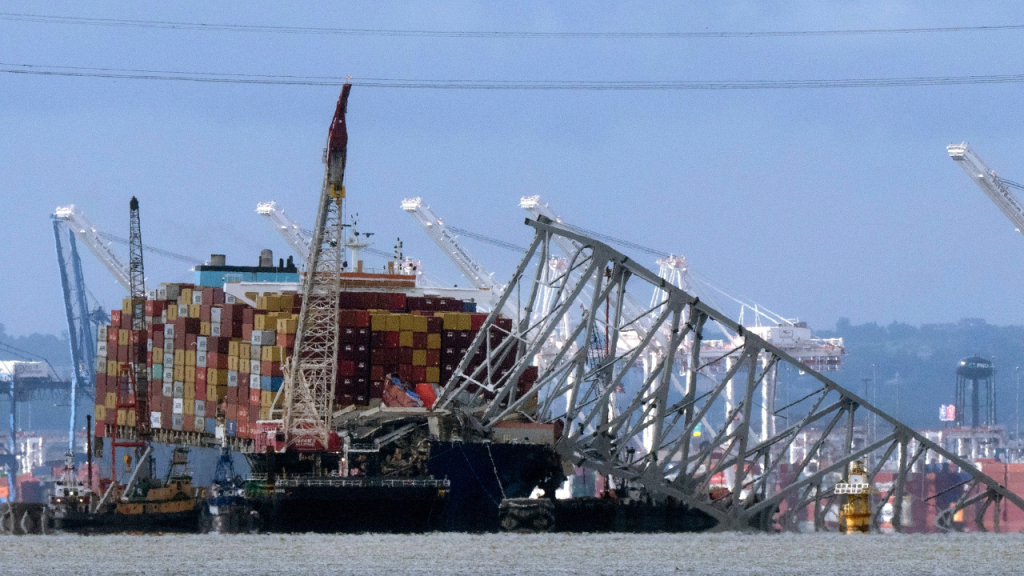The cargo ship Dali set sail from Baltimore to Virginia almost three months after losing power and crashing into the Francis Scott Key Bridge. With the help of four tugboats, the 984-foot long ship began moving shortly before 8:30 a.m. The ship was under its own power, carrying a full crew of 22 and six salvage experts, as confirmed by the U.S. Coast Guard. The Coast Guard is overseeing the voyage and has set a 500-yard safety zone around the vessel during its trip. The Dali is expected to go directly to Virginia International Gateway to have around 1,500 cargo containers off-loaded to reduce draft and then continue to Norfolk International Terminal for further salvage and repairs from the damage caused during the bridge collapse.
The Dali’s journey began after being stuck in the aftermath of the bridge collapse on March 26 when it lost power and propulsion, resulting in a crash that killed six construction workers. The ship was only refloated and guided back to port on May 20, after being stuck amid the wreckage for almost two months with a steel truss draped across its damaged bow. Investigations by the National Transportation Safety Board revealed that the vessel experienced two power outages before leaving the Port of Baltimore and suffered another power outage just before the bridge collapsed. The cause of the electrical failures is still under investigation, with the FBI conducting a criminal investigation.
Last week, the crew members of the Dali were permitted to return home under an agreement confirmed by a federal judge. None of the crew members had been able to leave the U.S. since the crash, but under the agreement, they are allowed to return home while being available for depositions. The collapse of the bridge has impacted thousands of longshoremen, truckers, and small business owners, prompting local and state officials to prioritize reopening the port and restoring its traffic to normal capacity to alleviate the economic ripple effects. The reopening of the Fort McHenry federal channel, which involved clearing wreckage from the 700-foot-wide by 50-foot deep channel, was announced earlier this month, helping to improve the flow of maritime traffic in the area.
Officials have set a goal to rebuild the bridge by 2028, aiming to address the crucial transportation link that was lost due to the collapse caused by the Dali’s crash. The incident has brought attention to the importance of safety measures and maintenance for maritime transport, emphasizing the need for thorough investigations and preventative measures to avoid similar accidents in the future. The reopening of the port and restoration of traffic flow are vital steps to recover from the economic setbacks caused by the bridge collapse. As investigations continue and plans for reconstruction progress, efforts are focused on ensuring the safety and efficiency of maritime operations in the region, with the hope of preventing any such accidents from occurring in the future.


